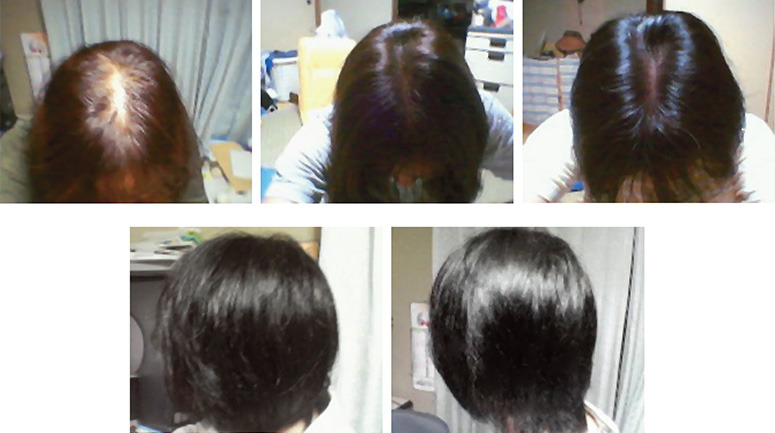Funori is a traditional Japanese hair cleanser and conditioner made from three seaweeds:
- Fukuro-funori (also known as jelly moss)
- Ma-kombu (edible kombu)
- Mekabu (nutrient-rich roots of wakame seaweed)
Its all-natural formulation contains no additives, preservatives, colorings, or fragrances, providing a chemical-free solution for cleansing and conditioning hair.
Table of Contents
Funori Benefits
Funori serves dual purposes of cleansing and conditioning the hair, offering additional benefits such as restoring natural sheen, alleviating scalp dryness and itchiness, and adding volume to thin hair.
The formulation also aids in repairing damage caused by coloring or perms and may be beneficial for individuals experiencing hair loss seeking a more natural approach to hair care.
Multiple Ways to Use Funori
Funori comes in powder form. The traditional Japanese way of using Funori is to mix it with hot water and then apply it to cleanse and condition the hair. Alternatively, apply it as a deep treatment pack or mix it with your shampoo.
This post outlines the multiple methods of using Funori for hair cleansing and conditioning.
1. How to Use Funori the Japanese Traditional Way

Make a mixture by adding one tsp of Funori to one cup of hot water. Let mixture cool before use.
- Rinse hair with lukewarm water.
- Apply to scalp and massage with tips of fingers.
- Apply to hair in straight strokes starting at the roots.
- Rinse well.
2. How to Use Funori as Deep Treatment Pack
Make a mixture by adding two tsp of Funori to one cup of hot water. Let mixture cool before use.
- Wash hair without using the mixture.
- Towel dry.
- Apply mixture.
- Cover hair with cap for 15-20 minutes.
- Rinse well.
3. How to Use Funori Mixed With Shampoo
Funori cleanses and conditions hair. You do not need to mix it with shampoo. However, if you like foam and lather, or if you have a favorite shampoo you wish to use, you can add the benefits of Funori to your shampoo.
Make a mixture by adding one tsp of Funori to one cup of hot water. Let mixture cool before use.
- Add two tsp of shampoo and mix well.
- Apply to hair as usual.
- Rinse well.
How to Control Oily Hair by Preening
Hair's oil glands are in the scalp. As a result, hair is always oilier near the roots and drier towards the ends.
Preening is the process of distributing your hair's natural oils by running your fingers through your hair. All living things with hair, fur, or feathers preen as a matter of instinct (we have all seen birds preen their feathers with their beaks to keep them in good order and looking beautiful).
- Massage your scalp until you feel oil on pads of your fingers.
- Run your fingers along the length of your hair, untangling and smoothing as you go.
- Keep preenig till you feel there is no more oil to spread.
- Do it daily, or as often as you feel necessary.
Regular combing also distributes hair's oil evenly and reduces the "oily" scalp feeling. It polishes the hair strands as well, making it more difficult for dirt particles to stick to the hair shaft, and easier to wash off.
Conditioning and Reducing Hair Loss
Funori is a source of vitamin K, calcium, magnesium, iron, iodine, and Fucoidan polysaccharides. It nourishes the scalp, restores hair’s natural sheen, and makes it more manageable.
There are many reported cases of Funori reducing hair loss and promoting new growth. Below are actual pictures.

Top left: Lady in mid-50s. Picture was taken in February 2008. Middle: 30 minutes after washing with Funori. Right: Six months later. During this time she did not use shampoos or other cleansers except Funori (occasionally mixed with additive-free soap).
Bottom left: Young teenager before washing hair with Funori. Right: 30 minutes after washing with Funori. Hair was blow-dried without using a straightener.
Using Seaweed Instead of Shampoos
When you mix Funori with water, you get a surfactant-free, non-alkaline viscous mixture, with a near-neutral pH of 6.5. Funori cleanses hair by sticking to dirt and pollutants on the hair shaft and rinsing them off, without chemically throwing off the healthy balance of hair's natural oils.
In contrast, shampoos are alkaline. They dissolve hair's oil and rinse it off, along with any dirt on the hair shaft. Shampoos do not discriminate between the "bad" dirt and the "good" hair oil; they strip both. With shampoos, you get "clean, squeaky" hair: Clean, because the dirt is gone, and squeaky, because hair's natural oils are gone too.
Shampoos and Oil Control Myth
The oil glands (sebaceous glands) in healthy scalp have built-in control mechanisms which sense whether scalp and hair are dry or oily, and by how much. If dry, they produce oil to alleviate the dryness. Once there is enough oil, they stop. These control mechanisms are nature's way of keeping a balanced, healthy level of necessary oils.
Shampooing chemically strips hair's oils. Oil glands sense the sudden lack of oil and become over-active. The result is a vicious cycle in which oil glands over-produce, and we feel the need for constant shampooing to "control" oil — where in fact, it is the shampoo which causes the oil glands to over-produce in the first place.
Going Shampoo-free
If you have been using shampoos and conditioners frequently for years, your scalp's oil glands will need to adjust to the new shampoo-free routine.
Depending on the individual, this adjustment period can take a few weeks, during which hair can feel too dry or oily. After the adjustment period, the hair's oil level stabilizes to its normal state.

